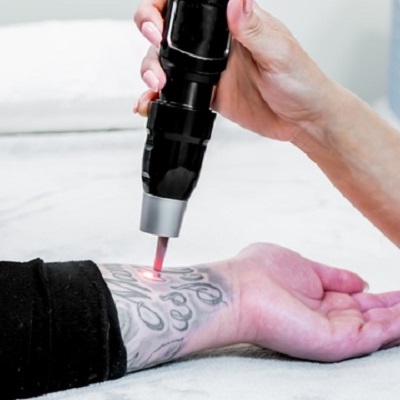Introduction
Tattoos have become an increasingly popular form of self-expression, yet many people find themselves regretting their decisions over time. Whether due to changes in personal style, relationships, or simply the passage of time, the demand for tattoo removal has surged. Among the various methods available, laser tattoo removal stands out as one of the most effective options. However, misinformation and myths surrounding the process can deter individuals from pursuing it. This article aims to clarify the realities of Laser Tattoo Removal by addressing common myths and presenting the facts to help individuals make informed decisions.
Myth 1: Laser Tattoo Removal is Completely Painless
The Fact
One of the most common myths surrounding laser tattoo removal is that the procedure is entirely painless. While advancements in technology have made the process more comfortable, it is not without discomfort. Patients often compare the sensation to that of a rubber band snapping against the skin. The level of pain can vary depending on factors such as the individual's pain threshold, the size and location of the tattoo, and the color of the ink used. Many clinics offer numbing creams or local anesthesia to alleviate discomfort during the procedure, making it more manageable.
Myth 2: One Session is Enough
The Fact
Another widespread misconception is that a single session of laser treatment can completely remove a tattoo. In reality, multiple sessions are typically required to achieve optimal results. Factors such as the tattoo's size, age, ink type, and the individual’s skin type all play a role in the number of sessions needed. On average, patients may require anywhere from three to ten sessions, spaced several weeks apart, to fully remove a tattoo. During each session, the laser targets ink particles, breaking them down so that the body can gradually eliminate them.
Myth 3: All Colors of Ink are Easy to Remove
The Fact
While laser technology has improved, not all ink colors respond equally to laser treatment. Darker colors, such as black and navy blue, tend to absorb laser energy effectively and can be removed more easily. In contrast, colors like yellow, green, and light shades are often more challenging to remove. Some pigments may require specialized lasers or techniques, which can prolong the removal process. It’s essential to consult with a qualified professional who can assess the specific tattoo and provide realistic expectations regarding removal outcomes.
Myth 4: Laser Tattoo Removal Leaves Scarring
The Fact
Concerns about scarring are common among those considering tattoo removal. While scarring is a potential risk, it is not a guaranteed outcome of laser tattoo removal. Advances in laser technology have minimized the risk of scarring significantly. Factors that can influence the likelihood of scarring include the individual's skin type, the tattoo's location, and aftercare practices. Following proper aftercare instructions, such as keeping the area clean and moisturized, can help minimize scarring. A skilled practitioner will also use appropriate techniques to reduce the risk of adverse effects.
Myth 5: Tattoo Removal is Only for Regretful Decisions
The Fact
While many individuals seek tattoo removal due to regret, the reasons for seeking this procedure can be diverse. Some may wish to remove a tattoo that no longer reflects their identity, while others may need to remove a tattoo for professional reasons or to make space for new artwork. Additionally, individuals may seek removal due to health conditions or allergies related to tattoo ink. Laser tattoo removal provides a solution for anyone wishing to modify their body art, regardless of their motivations.
Myth 6: At-Home Removal Kits are Effective
The Fact
With the rise of the internet, numerous at-home tattoo removal kits have emerged, promising effective results. However, these kits often contain harsh chemicals and can lead to skin damage, infections, or incomplete removal. Professional laser tattoo removal performed by trained specialists is the safest and most effective method. Professionals use advanced technology and techniques to target ink particles safely, ensuring a higher success rate and lower risk of complications.
Conclusion
As tattoos continue to gain popularity, so does the demand for effective removal methods. Understanding the facts behind laser tattoo removal is crucial for those considering this option. By debunking common myths, individuals can approach the process with realistic expectations and informed decisions. It’s essential to consult with qualified professionals who can provide personalized assessments and treatment plans. With the right information, individuals can take the first step toward reclaiming their skin and embracing a future without unwanted tattoos.





Comments